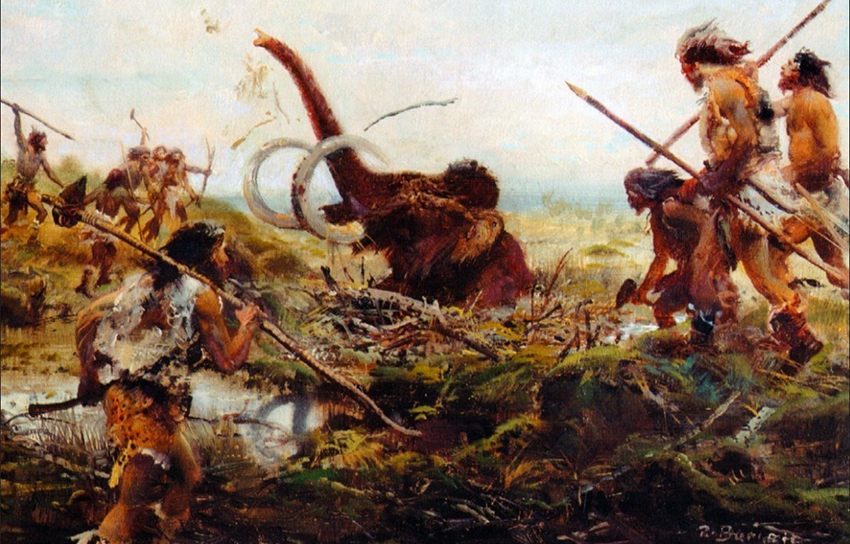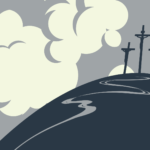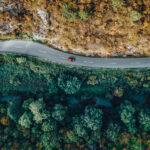Reviews: The Five Million Year Odyssey, Peter Bellwood, Princeton, The Invention of Prehistory, Stefanos Geroulanos, W W Norton
The origins of humanity are of perennial interest. Whether it be the mythology of ancient societies or the more scientific methods at our disposal now, the same questions keep arising: were our ancestors like us? Where did our capacities for love, war and art come from? Could things have been different?
Of all the species in the genus homo, modern humans are the only ones left, and we have colonised the globe at an accelerating and astonishing speed, as human brains grew bigger – uniquely so – and we gained the ability to write – and read – about our success. Yet written human history is contained in only the last 0.1% of the five-million-year history that Peter Bellwood describes in his book.
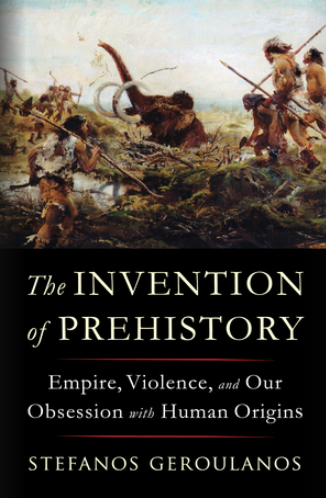
Stefanos Geroulanos, in his book, studies a darker side to our interest in prehistory. He asks what perspectives on prehistory tell us about contemporary preoccupations – from the thinkers of the Enlightenment to Freud and Darwin, to how more recent tracing of our lineage in fine detail relates to debates about race, gender and politics.
For example, the theory of natural selection, which explains the vast complexity of life on earth, had consequences for our view of ourselves, one which had to be recalibrated within Christianity, and which continues to be resisted in some Christian quarters, most prominently in the US. While we are not exactly descended from apes, they are our kin, prompting a re-evaluation of how we fit into the animal world.
Natural selection, famously, is associated with the term ‘survival of the fittest’. While species proliferate, they also go extinct. The current story is that five million years ago there were various groups of hominins, some of which were bipedal. By two-and-a-half million years ago other hominins were extinct, and the genus homo reigned. Two million years ago some of these groups left Africa and became Neanderthals and Denisovans (with whom, the genetic evidence suggests, homo sapiens mated). Three-hundred thousand years ago, homo sapiens dominated, and the other species interbred or were forced into smaller and smaller pockets, as seems to be the case in southern Spain.
Ancient hominins had a range well beyond our ape cousins; there are indications our large brains and upright posture gave advantages for mobility. After 50,000 years ago, there is a record of tools, rock art and burials. Our brain size had increased four-fold in a relatively short period, allowing complexity of culture and language that meant for a long time we thought of ourselves as separate to the animal world. This in turn allowed for domination of the world – to our consternation now, as Bellwood says, but evolutionarily speaking, we are particularly successful, rivalling the plankton and the beetles.
Mastering the use of fire – one sign of our uniqueness – may have come quite early for homo species, as our teeth and guts seem adapted for cooked foods, which would have given quicker access to nutrition. Cooperation allowed for sharing of foods, and stone tools sped up the process of butchering and harvesting. Flaked, sharp tools known as ‘Oldowan’ after their location in Tanzania, had travelled up to the north of Africa as early as two million years ago.
As people spread, they took culture with them. Language families show a geographical spread whose only equivalent, says Bellwood, is the massive European colonisation of the nineteenth century. Likewise, agricultural practices travelled. Farming did encourage sedentary populations, but people also migrated when populations grew too big and caused problems (the details of which James Scott covers in his Against the Grain book). Like the annual floods of the Nile, people spread, settled, then spread again after resources had dried up.
It is likely that agriculture developed in different places, but the Fertile Crescent was the first area with deliberate selection of grains, as well as having a bit of luck with easily domesticated species – wheat, sheep, cattle – and, 20,000 years ago, the onset of warmer, more stable weather. By 10,000 years ago there were ‘towns’ – and bread. In Turkey, single, round houses gave way to joined, multi-room rectangular structures for large groups. (Turkey is a hotspot for finds of ancient settlements.) Migrations still happened because of overpopulation or climatic conditions, as seems to have happened 8000 years ago in the Middle East.
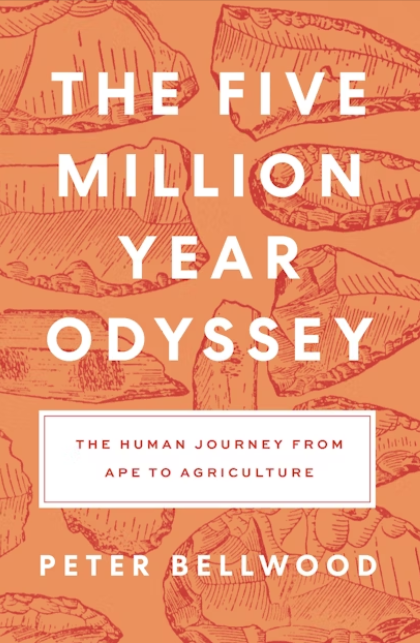
Domestication of pigs and millet rice happened in China, with a corresponding spread and explosion in population, and there was also independent domestication in Africa, the Americas and the highlands of PNG, whose peoples have a different language group than the coastal Pacific peoples around them. One of Bellwood’s more philosophical opinions is that separate and multiple domestication periods on different continents indicates a unity of human development – congregating, settling, adapting local fauna and flora and landscape to their/our particular needs.
Scott argues that agriculture and cities were undoubted developments but not that they were necessarily good. Geroulanos writes about how, in nineteenth-century Europe property-owning classes, as they investigated ‘primitive’ ancient peoples, were worried about how ‘natural’ property ownership and capitalism were. They were less concerned about legitimising their own endeavours than concerned about how modern non-Western peoples could be. This was on the back of lengthy discussions over barbarism and civilisation.
Enlightenment thinkers assumed a linear progression, and saw current ‘uncivilised’ people as, like ancient humans, like children who needed to ‘grow up’. Rousseau didn’t disagree with the idea of primitive peoples as children but wondered if their state was more innocent and natural, therefore questioning whether European civilisation was that desirable after-all. For Freud, all of us have a ‘savage’ lurking within, close to the surface, and like Rousseau he wondered if civilisation was bad, at least for repressing ancient emotions.
From Steven Pinker to Yuval Harari there have been claims that early societies were warmongering but now most people live in peaceful societies (Gaza, Ukraine and Sudan being exceptions perhaps). For other thinkers, war only comes with modernity, when the existence of nation-states and destructive technologies allow for widespread violence. For the likes of Scott and David Graeber, so-called primitive societies were occasionally violent, but the term ‘war’ can only be applied to modern societies. The stakes are high here because these thinkers are arguing about whether war is natural or able to be dispensed with.
During the twentieth century world wars, the enemy was often characterised as barbarian for their warmongering, yet Geroulanos notes that, contradictorily, characterising the enemy as barbarian could justify bombing them into oblivion.
A more recent debate is around gender roles in ancient societies. One reason for describing ancient humans as violent is that anthropologists have typically focussed on male behaviour. Geroulanos says that feminists have perhaps overcorrected by describing prehistoric males as all serial rapists, but as Cat Bohannon argues in her book Eve, ancient human groups start to look different when we look at what the women were doing.

Debate about inherited human nature is like the theological debates about original sin and has implications for how we conceptualise human ethics. We look, understandably, to explanations that connect us to our deep past, we look for clues about our ‘true’, ancient selves to explain our behaviour in the present, in order to reconnect with a better version of ourselves, to shrug our shoulders to suggest there is little we can do to change, or to push for progress beyond what we see as now outdated ways of behaving.
Nick Mattiske blogs on books at coburgreviewofbooks.wordpress.com and is the illustrator of Thoughts That Feel So Big.



